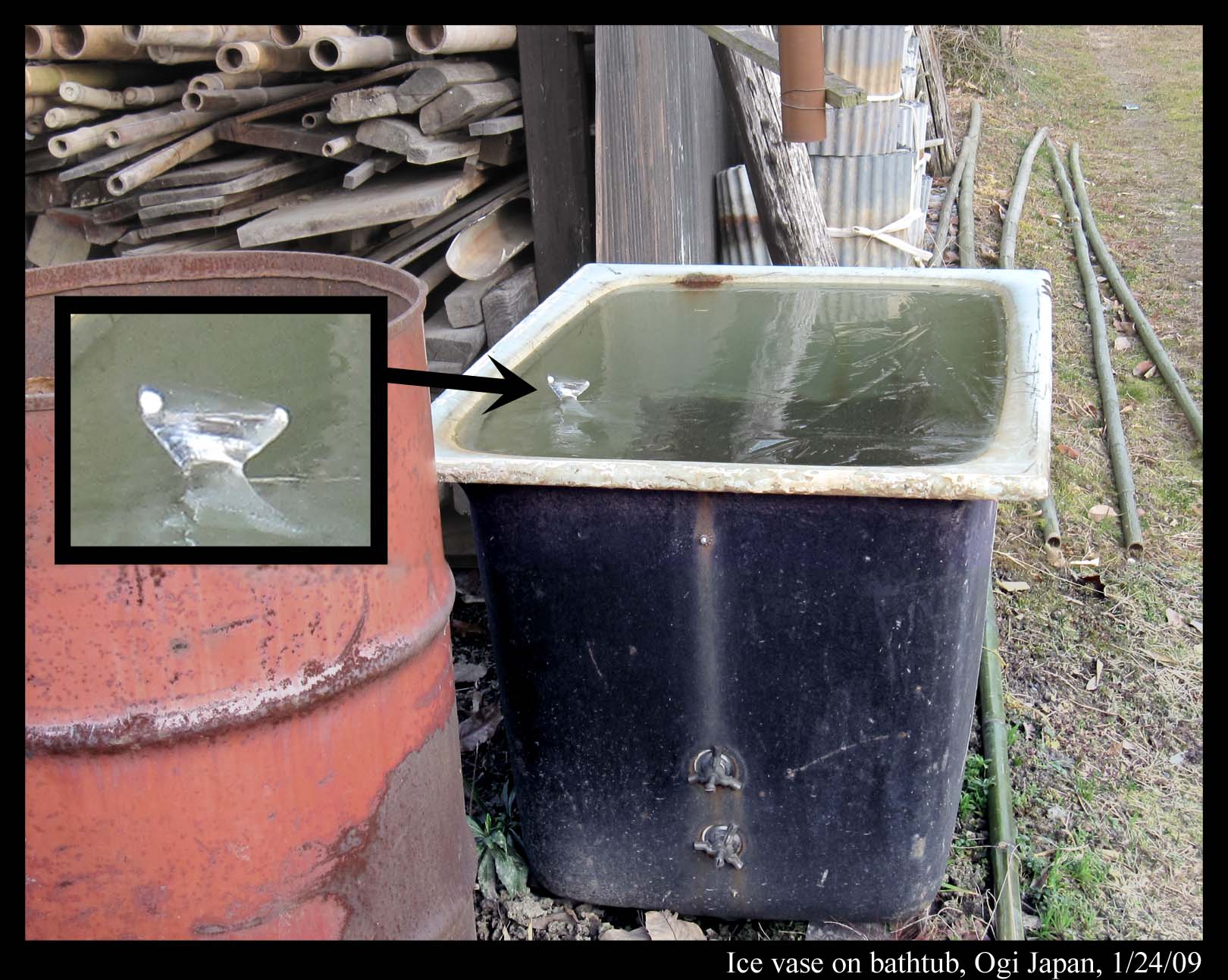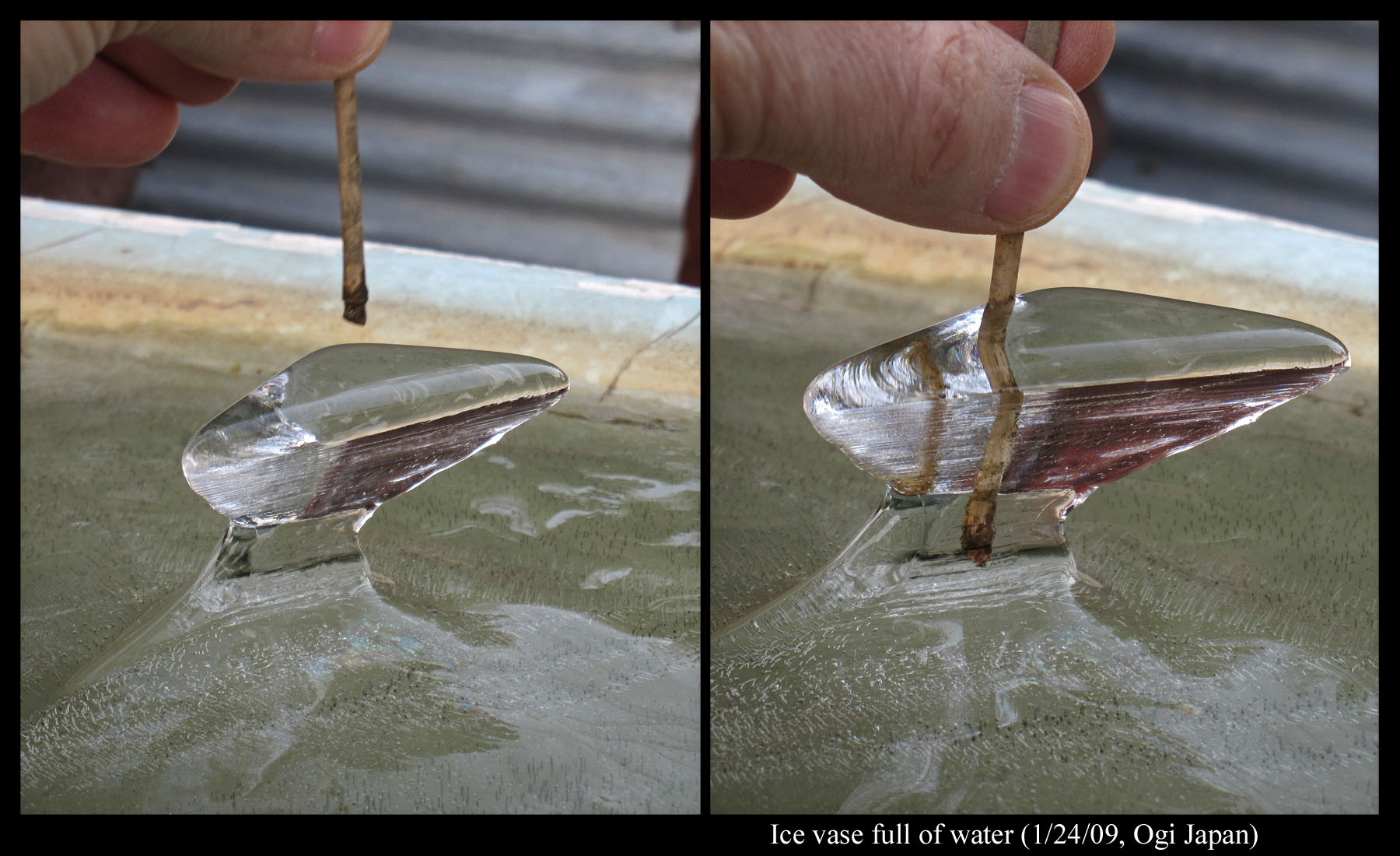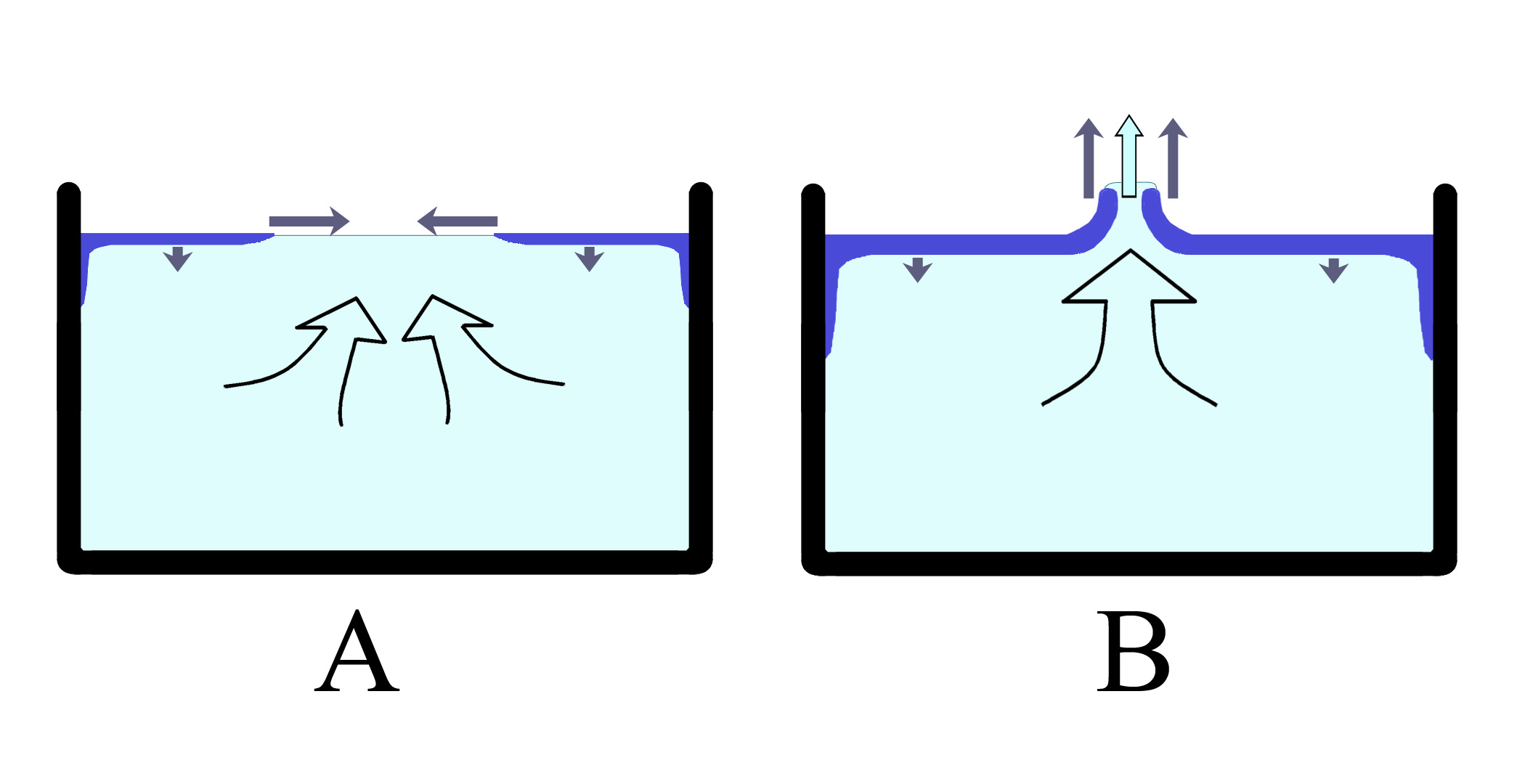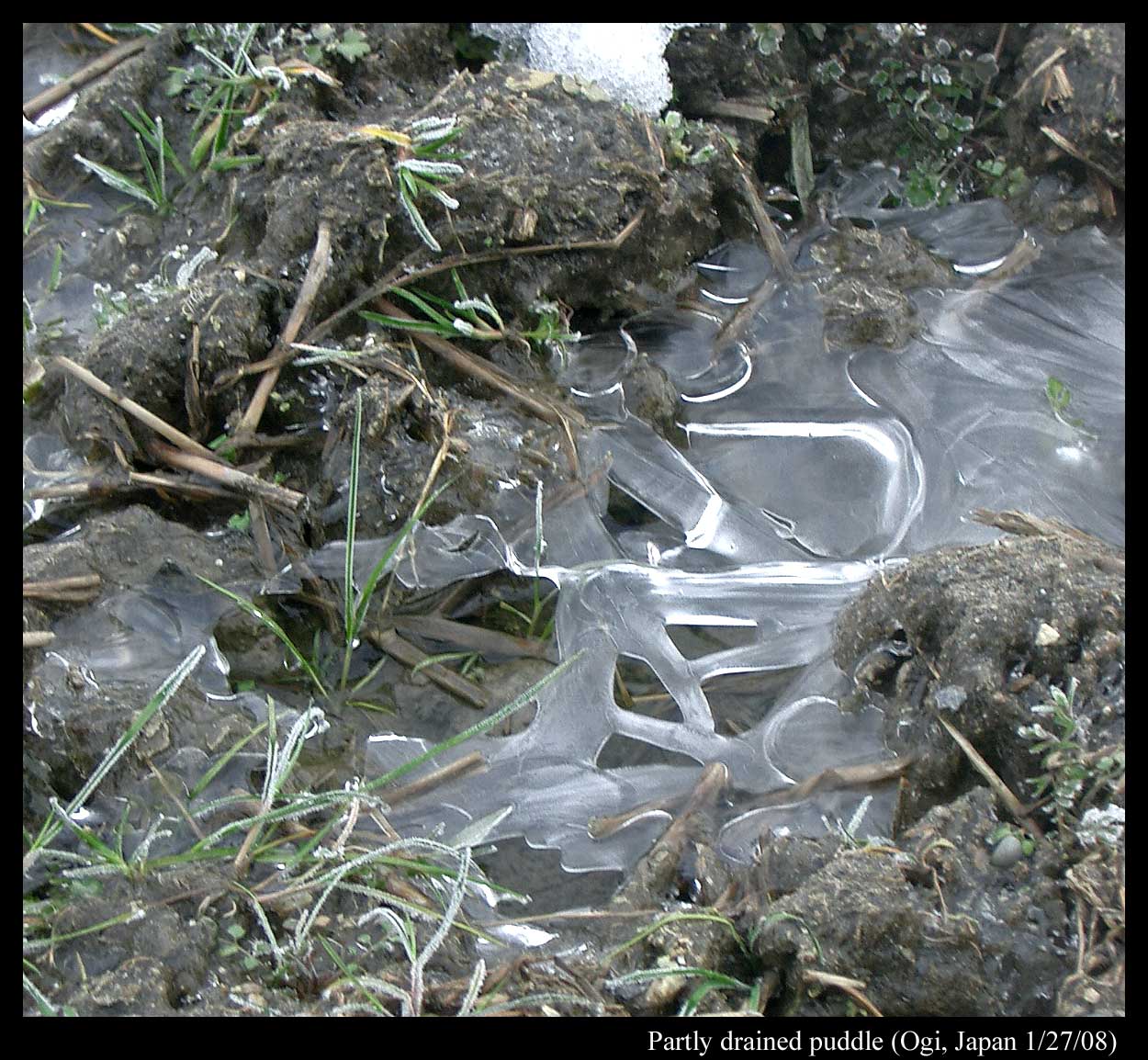| « What We Sometimes Miss | Ice Forms on Slow-moving Water II: Pancakes and Frozen Foam » |
An Ice Vase Sprouts From a Bathtub
Someone recently sent me a beautiful image of an ice structure in the shape of a vase. The vase in that case had somehow sprouted out of a frozen birdbath. The thing reminded me of an ice vase I once found on an old plugged-up bathtub in a farmer’s field in Japan. See the photo below.
On approaching the tub, I first thought the ice bump on top was some chunk that had fallen off the roof and refrozen. But on closer view, I found that the thing had sprouted out of the surface. How did I know? Well, as I leaned over it, my body pressed against the tub wall, and I noticed something move. Turned out it was water on top, filling up the vase to the brim! See the sequence below.
Clearly, I’m not pushing that flimsy twig through solid ice.
Of all the curious things I’ve seen here, never before nor since did I see something like this water-filled ice vase. However, the vase forms in much the same way as the somewhat-more-common “ice-cube spikes” that sprout from ice cube trays. But how do such spikes and vases form?
Briefly, ice spikes and vases start when liquid water gets squeezed out of a hole in the ice. The squeezing happens because (1) everywhere except at a small hole, the tub walls and surface ice confine the liquid and (2) some of the water inside freezes to ice. See drawing “A” below.
The ice, shown in dark blue, starts from the walls of the tub (though sometimes ice will nucleate away from the wall) and grows both along the surface and into the depths. Ice grows faster along the surface, so I made the gray arrows longer along the surface. But liquid water expands upon freezing to ice, so the resulting mass takes up more space, meaning that the remaining liquid gets pushed away. This liquid must flow through the hole. But most of the time, the water just flows out the hole and spreads across the ice, flooding the surface to some extent, meaning no spike or vase forms (thus the rarity of these forms).
However, in rare cases, the rate of freezing very nearly balances the rate that the water level moves up. So, as shown in drawing “B” above, the ice follows the outer edge of the water surface at the spout. This balance of rates is not as coincidental as you might think. For example, if the ice were to start growing faster, thus pinching off the spout, then the water exiting the hole, being confined to a narrower opening, would also flow faster – just like the water in a river flows faster in narrow channels. This would tend to produce some flooding, thus widening the spout and opposing the pinching. This may also account for the horizontal ribbing texture you can see in the photographs above.
Finally, why does this vase, as well as other vases (see the link listed below), often have a roughly triangular cross section? When the ice first spreads across the surface, it often shoots across in lines that slowly thicken. The direction of these lines are more or less random, and when lines with random directions cross each other, the boundaries are often triangles. See how it worked out in the partly drained puddle below.
So the last remaining hole in the surface glaze likely has a triangular perimeter. This explains the triangular cross-section of vases. You might wonder, as I once did, why some puddles, like the one pictured above, drained instead of flooded. But that story will have to wait for another day.
Finally, note that unlike the ice protrusions I described in “Ice on the Rocks” (Jan. 27, 2010), which grow from the bottom, these protrusions grow from the top. Nature is rich.
- JN
To see other example of vases and spikes, click on the link
http://www.fredandsarah.plus.com/ice/index.html,
then click on the link on the left called “Other people’s ice spikes”.
3 comments
Well done, Jon! I found (and extensively photographed, if you want any example) a beautiful ice wall in a Swedish forest puddle. It was about 3cm high, sharp at the top, and about 100cm long, with a tringular cross-section which stood clear at the 1cm thick base from the main frozen surface, indicating water level changes. (Nearby there were many “crunchy puddles” as you call them.) The formation curved around the inside of the puddle to form a large ellipse, and was bafffling until I read your blog on ice vases.
Regards,
TNT

Well, thanks Tom.
The ice wall sounds like a drainage feature, related to the “crunchy puddle” phenomenon (as you mention), and the Jan 27, 2013 entry on puddles.
Clearly, there is a lot more to observe and describe about frozen puddles! I’d really like to see a photo of this one you mentioned.
Jon
I have photographed and video’s an ice vase that I found in an old shower floor that was in the bed of my truck. I had never seen anything like it and this afternoon I had some time indoors so found Your website.
Oh and I too put a small twig down into the vase.
Mine too was triangular.
How do I send you the video and photos?



